Australian Tropical Rainforest Plants - Online edition
Garcinia warrenii F.Muell.
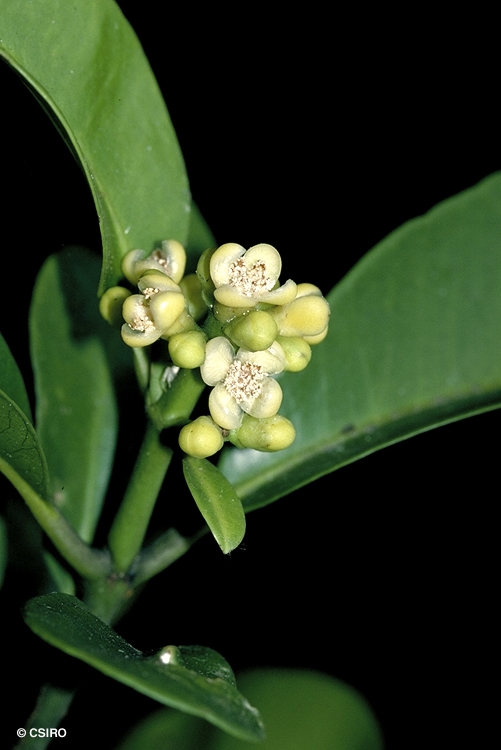
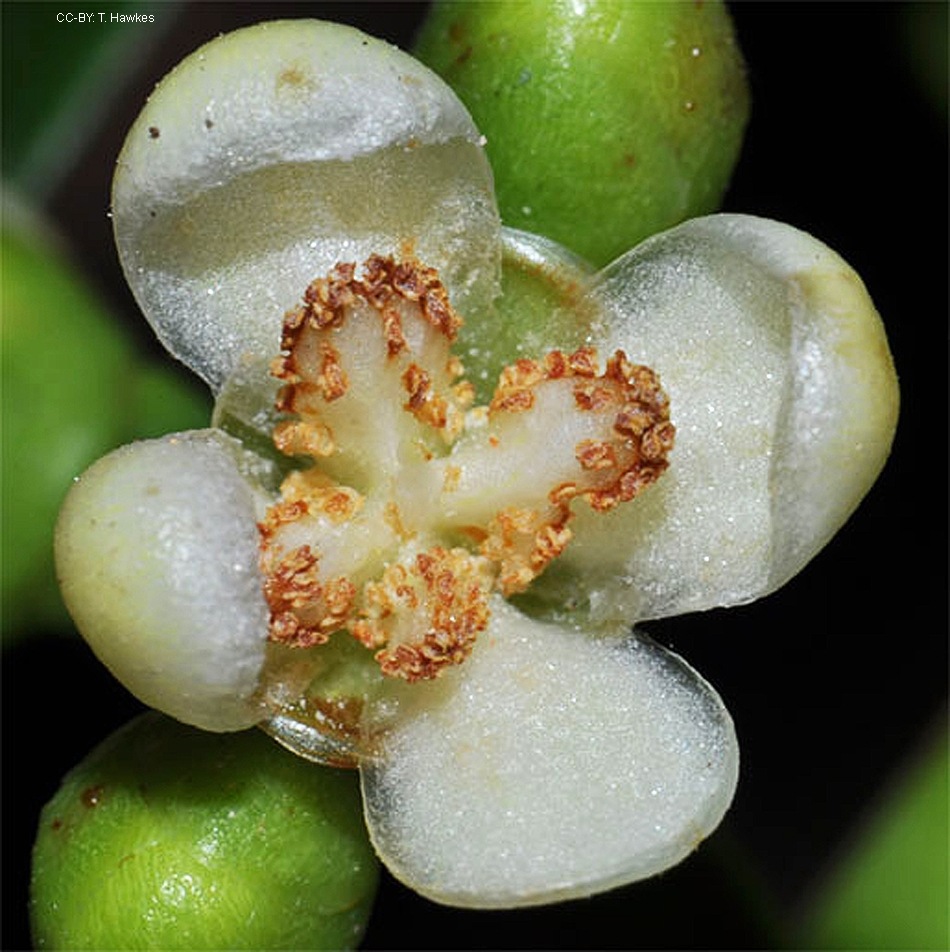

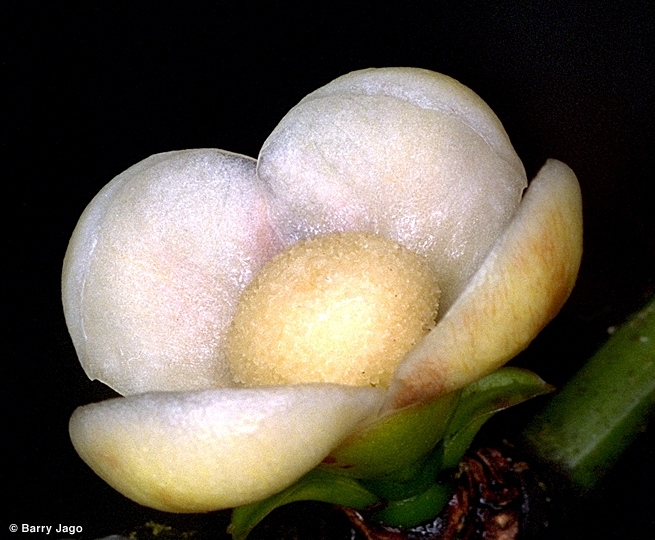


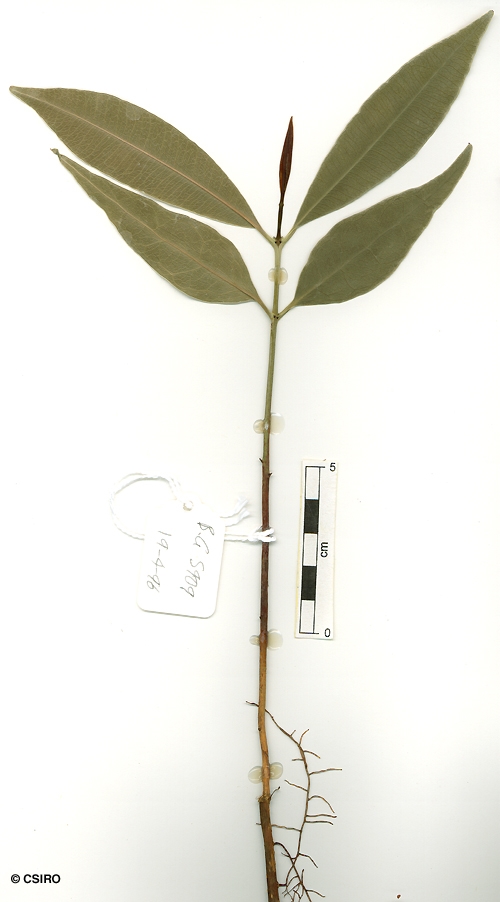

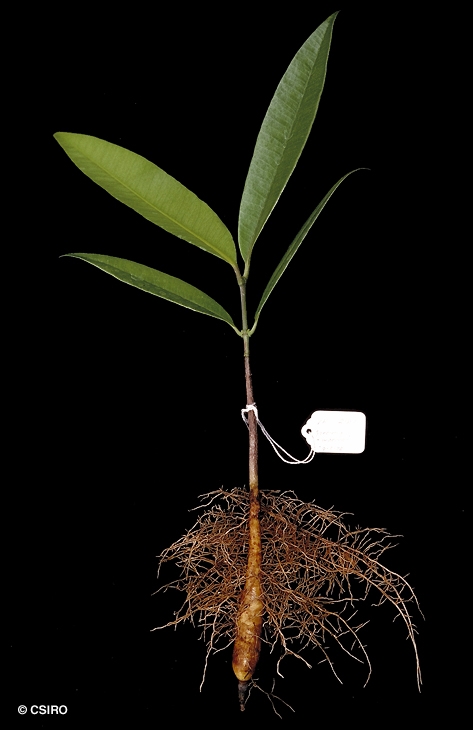
Mueller, F.J.H. von (1891) The Victorian Naturalist 8: 109. Type: Near the Coen River; Stephen Johnson s.n., in 1891(holo: MEL; iso: BRI [AE0340253], K 000677819).
Native Mangosteen; Warren's Mangosteen
Petioles and twigs produce a yellow exudate. Petioles 8-30 mm long, not channelled or becoming slightly so in dried specimens. Leaf blades 4.0-23 cm long x 2.8-12.3 cm wide; elliptic, oblong-elliptic, ovate, obovate, orbicular or oblanceolate; margin not recurved or rarely slightly. Exudate-containing canals difficult to see on fresh leaves, distinct on underside of dried leaves as numerous unbranched or branched straight or wriggly +/- parallel lines, sometimes second set of canals visible running across the other canal set.
Male inflorescence terminal or rarely axillary, a panicle, 8-66-flowered, 15-120 mm long, peduncle 5-38 mm long, bracts (which sometimes become full-sized leaves) at peduncle apex, triangular. Male flowers: fragrant with a clove-like smell, diam. 10-15 mm; pedicels absent or up to 4 mm long; sepals 4, 2-whorled, outer pair joined, D-shaped, 4-5 mm long x 4-5 mm wide; petals 4, free, erect, orbicular or oblong-obovate, 5-7 mm long x 4.5-6 mm wide, cream or yellow, margin usually recurved and thin; andoecium 4-phalangiate; phalanges adnate to petals, obovate-elliptic at anthesis, ca. 3 mm long x 2-2.5 mm wide; anthers several, most clustered around phalange margin, bilobed, bithecate, ca. 0.4 mm long x 0.2 mm wide; pistillode rudimentary, attenuate-conical, ca. 2.5 mm long. Female inflorescence terminal, a solitary flower or 2 or 3-4-flowered raceme, 17-25 mm long; peduncles 4-12 mm long. Female flowers: fragrant with a clove-like smell, 14-16 mm diam.; sepals 4, 2-whorled, outer pair joined, inner pair free, D-shaped, 5-6.5 mm long x 8-9 mm wide; petals 4, free, orbicular, 9-11 mm long x 10-12 mm wide, cream-yellow; staminodal phalanges 4, erect, adnate to petals, strap-shaped, ca. 5 mm long x 3.5 mm wide, apex divided into 4-6 filaments, with 1-2 antherodes on each side; gynoecium oblong-globose, 8.5 mm long x 6-8 mm wide; ovary globose or 4-sided, 7-8 mm long x 6-8.5 mm wide, sessile, 4-locular, uniovulate; stigma mass sessile, domed, diam. 7-8 mm, cream becoming pink or reddish with age.
First pair of leaves obovate. At the tenth leaf stage: leaf blade elliptic to ovate, apex acute, base attenuate, glabrous, undersurface with a network of fine almost parallel latex canals; stipule-like glands on the stem near the base of the petiole; stipule-like appendages also on the base of the petiole between the petiole and stem. Leaves and petioles produce a yellow exudate when cut or broken. Taproot thickened, carrot-like (Daucus carota). Taproot and stem arise from the same end of the seed. Seed germination time 307 to 435 days.
Occurs in NT, CYP and NEQ as far south as Babinda. Altitudinal range from sea level to about 1050 m. Usually grows in well developed rain forest but also found in marginal sites and along watercourses in open forest. Also occurs in New Guinea.





